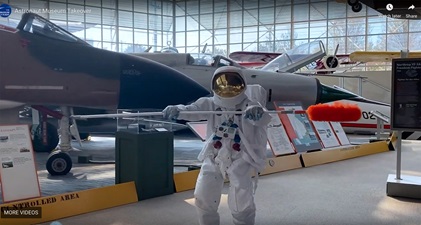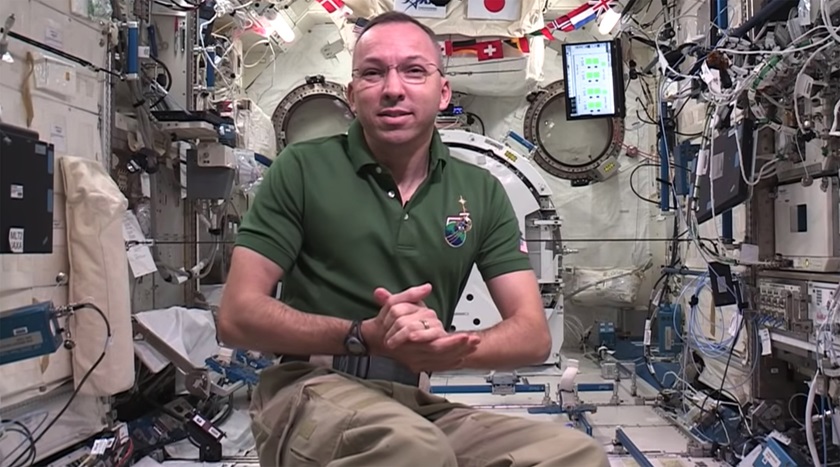Aviation education options make homeschooling fun
NASA, US Air Force, aviation museums offer activities
With schools shuttered under stay-at-home orders because of the coronavirus pandemic, many parents are now tasked with homeschooling their children. Aviation options can make online learning at home attractive and fun for our younger generation.
My wife and I are challenged to engage our 17-year-old daughter Lauren with online science and math classes instead of allowing her to waste hours viewing cat videos, topping her latest Sims scores, or “snapping” with friends on social media. So I researched and found several aviation options that can turn a boring day into a pleasing learning experience for youth in kindergarten through twelfth grade.
Embry-Riddle Aeronautical University is offering free online courses to students and the public that introduce core concepts of science, technology, engineering, and math (STEM). Topics range from aeronautics and meteorology to computer applications, history, and more. Aviation 101 is a self-paced introduction to aviation that you can sign up for any time. Aviation is Your Future is a free, massive open online course that offers an introduction to aviation for youth ages 8 to 17 that began March 16. It is a project by the Women in Aviation International Chapter at Embry-Riddle Worldwide. The university has campuses in Arizona and Florida and also offers online courses for high-school juniors and seniors in those states, which allow them to earn college credits if they meet certain criteria. The courses are: Aeronautics Pathway, Aviation Legislation, History of Aviation in America, Meteorology, Introduction to Computers and Applications, Introduction to Sociology, and Foundations of Biology.
Learn STEM thinking from a space agency
NASA encourages young people to let their “creativity take flight” with engineering activities, videos, and online games that foster interests in STEM concepts. In one video beamed from the International Space Station, astronaut Randy Bresnik demonstrated Newton’s second law of motion with an experiment that propelled different objects across the cabin module at different speeds.

Astronaut ‘takes over’ The Museum of Flight in Seattle
Speaking of astronauts, an “astronaut” decked out in a space suit and armed with cleaning brushes took over The Museum of Flight to tidy up the facility’s impressive aviation collection. Exhibit aircraft include models ranging from a Boeing Stearman PT–13A Kaydet biplane trainer to a supersonic Lockheed M–21 Blackbird variant. The museum recently launched video tours with Senior Curator Matthew Burchette, 3D explorations, virtual experiences, podcasts, and additional family activities.
Participate in a race on the moon
Entertainment and education company Moon Mark is challenging high school students to think outside the box and participate in a virtual lunar race car design competition. Young people are encouraged to collaborate with their peers during the design phase, with a $1,000 prize donated to the charity of their choice. Additional stages for a moon race contest coordinated with private aerospace company Intuitive Machines will begin after the first segment is completed. During that competition, six teams of students will meet a series of challenges with an opportunity for the top two teams to build and race two vehicles on the moon in 2021, the companies noted. NASA previously awarded Intuitive Machines a mission order to launch the modular Nova-C Lunar Lander containing scientific payloads, data links, and hazard avoidance technology via SpaceX’s Falcon 9 rocket.
Virtual STEM classes available for middle and high school students
Redbird Flight Simulations is offering weekly aviation-focused, virtual classes for middle and high school students for six weeks, which began March 31. The lessons are led by Redbird Director of STEM Education Greg Roark, who is also known to youth as “Mr. R.” The classes are available at no charge and a simulator is not necessary.
Practice flight lessons without flying an airplane
Gleim Aviation and X-Plane 11 software developer Laminar Research are providing an introductory version of the Gleim X-Plane Flight Training Course and the full version of X-Plane 11 for no charge through June 30. The Gleim course allows flight students to practice their flights using the Gleim Private Pilot Syllabus before experiencing the situations in an airplane.
New York aviation museum turns to TikTok
Follow the Cradle of Aviation Museum’s TikTok social media sensation #EducatorTom Barry for fun and informative videos as he beckons virtual guests to follow him through the Garden City, New York, museum’s many exhibits. Engaging “edutainment” posts will capture students’ attention because he speaks their language on the social media platform. The museum also brings exhibits into homes with virtual tours and additional online activities.
Lesson plan with the U.S. Air Force
The National Museum of the United States Air Force at Wright-Patterson Air Force Base near Dayton, Ohio, has embraced stay-at-home learning by posting dozens of lesson plans for kindergarten through twelfth-grade, resource guides, virtual tours, coloring pages, word searches, and more.
Air and Space Museum posts online educator resources, webcasts
The Smithsonian National Air and Space Museum in Washington, D.C., has posted an abundance of educator resources including Emmy-nominated, fast-paced “STEM in 30” webcasts, online activities, lectures, and more.
Houston museum ‘open’ for virtual tours
The Lone Star Flight Museum in Houston opened a virtual learning center with STEM activities, video tours of aircraft and exhibits, and behind-the-scenes visits to the museum’s archives.
Michigan museum explains aviation concepts
The Air Zoo Aerospace and Science Experience in Portage, Michigan, embraced online learning and populated its pages with STEAM experiments (that’s science, technology, engineering, arts, and math), including a homemade rocket demonstration, fact-finding missions, storytelling, and more.
Visit the ‘USS Hornet’ museum from your own home
The USS Hornet Sea, Air, and Space Museum in Alameda, California, opened an online portal to help guests tour the aircraft carrier and its aircraft. Additional activities include a paper airplane experiment, USS Hornet puzzles, Apollo 11 coloring pages, and more.
Naval aviation museum seeks questions for Facebook live sessions
The National Naval Aviation Museum in Pensacola, Florida, is seeking questions from students and parents for Facebook video sessions broadcast live from the exhibit hall on Tuesdays and Thursdays. The interactive History Up Close series will be archived on the museum’s social media site.
Retired airline captain Schiff puts on a lab coat
Longtime career pilot and AOPA Pilot columnist Barry Schiff turned scientist to explain how airplanes fly. You won’t want your young ones to miss this free, educational, and entertaining video that helps explain how aviation things work.





